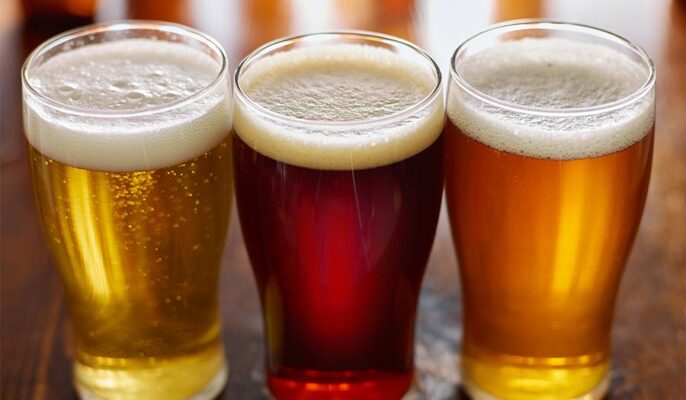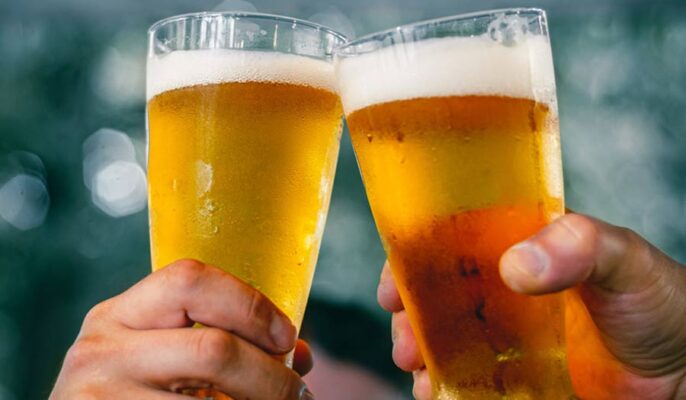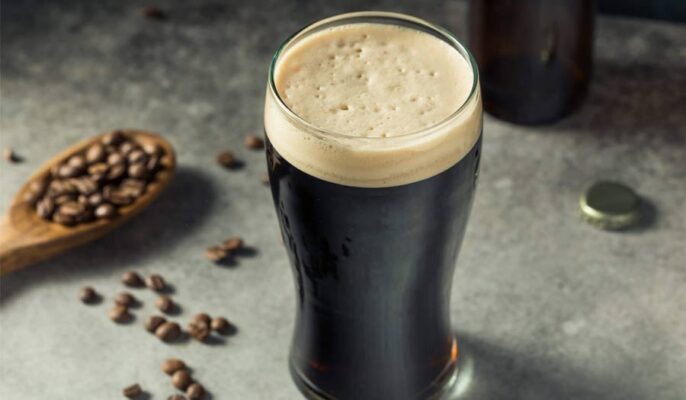In an ever-evolving world, beer types are expanding to meet the needs of different customers. An unlimited world of beers means any pub offers a dizzying selection of drinks. From classic beers to full-bodied IPAs to funky ales, each type of beer spawns more subcategories to dazzle drinkers.
How is beer classified?
Every beer served at a brewery, bar or restaurant can be broken down into two basic types: ales and lagers. The key differentiating factor is the specific yeast strain used in the fermentation process. Despite its simple nature, the choice of yeast has a profound effect on the brewing method and final flavor profile of a beer.
Knowing the basic difference between lager and lager is essential for brewers, bartenders and servers. This knowledge enables you to guide your customers in a diverse selection of beers and help them make informed choices based on their preferences. By understanding the profound impact yeast has on fermentation and flavor, you can take the beer drinking experience at your venue to new heights.

Teer style
Types of beer can be broken down into hundreds of different styles, all with unique flavors, colors and aromas. Two characteristics used to describe beer styles are alcohol by volume (ABV) and international bittering units (IBU).
What is ABV?
ABV stands for alcohol by volume and represents the percentage of alcohol in beer. The alcohol content in beer can actually affect how the beer tastes. The higher the alcohol content, the more bitter the beer tastes. In very strong beers, the alcohol numbs the tongue and neutralizes the flavor, so extra spice needs to be added to compensate. Winemakers use alcohol level to achieve the perfect balance between sweetness and bitterness.
What are IBU?
IBU stands for International Bitter Units and is a measure of the amount of bitter compounds in beer. IBU ratings start at zero and have no upper limit, but most beers are between 5 IBU and 120 IBU. The average human palate cannot detect anything above 120.
What kind of ale?
Ales are often hoppy, but have a lower alcohol content than IPAs. Most types of pale ales (including American Amber Ales, American Pale Ales, Blonde Ales, and English Pale Ales) are malty, medium-bodied, and easy to drink.
Ale brewing method
Ale is brewed with Saccharomyces cerevisiae, a yeast that ferments throughout the beer and settles on the top of the fermenter. They are fermented at temperatures between 60°F and 75°F, allowing the yeast to process .
Malt beer characteristics:
- Intense and strong taste.
- Fermented with top-fermenting yeast.
What is a lager?
Lagers are the typical entry point for new drinkers into beer. Made with bottom-fermented yeast that has a low tolerance for alcohol, lagers have a light, malty flavor.
Lager brewing method
Lager is a bottom fermented beer. Yeast used to ferment beer flocculates (aggregates) at the bottom of the fermenter. Brewer’s yeast can also tolerate much lower temperatures than ale’s yeast. between 45 and 55 degrees Fahrenheit, these cooler temperatures reduce the amount of by-products from the fermentation stage and produce a cleaner, crisper beer.

Different types of beer
Beer can be divided into malt and lager, but there are many different types of beer. Each beer can vary in color, alcohol content and taste.
Pale ale
Pale ales are one of the most popular types of beer in the world. It is known for its golden to copper color and hops. It is hoppy and has a light malt flavor, giving the drink a bitter aftertaste. Alcohol content is generally low and easy to drink.
- ABV: 4.4-5.4%
- IPA: 30-50
- Examples: Pale Ale from Sierra Nevada Brewing Company, Smuttynose Shoals Pale Ale
- Pairings: seafood, poultry, cheddar cheese
- Serving temperature: 40-45 degrees Fahrenheit
American Amber Ale
American amber ales are usually golden or amber in color. Due to the high amount of hops used in brewing, this beer tends to be quite bitter. The drink has a high alcohol content and many customers may find it very strong.
- ABV: 4.4-6.1%
- IPA: 25-45
- Examples: Lagunitas Imperial Red Ale, Stone Brewing Company’s Levitation Ale
- Pairings: American cuisine, meat, fish, blue cheese
- Serving temperature: 40-45 degrees Fahrenheit
Pilsner beer
Pilsner is usually made from malt, hops and neutral or hard water. Pilsners stand out from other beers because of their dry, bitter taste. Very popular in summer.
Types of Pilsner
- American Pilsner
- Czech Pilsner
- German Pilsner beer
Stout
Stout is known for its dark color and thick, creamy head. They have a rich roast flavor that comes from the unmalted roasted barley added to the wort. Stouts often have flavors of coffee, chocolate, liquorice, or molasses, making them a perfect accompaniment to desserts.
American Stout
- ABV: 4.5-6.0%
- IBU: 20-30
- Examples: Shipyard Longfellow Winter Ale, Arcadia London Porter
- Pairs With: American and English cuisines, meat, chocolate, fontina cheese
- Serving Temperature: 50-55 degrees Fahrenheit
Oatmeal Stout
As the name suggests, Oatmeal Stout has oats added to the malt mix. This adds smoothness and sweetness to the beer.
- ABV: 3.8-6.0%
- IBU: 20-40
- Example: Young’s Oatmeal Stout, Troegs Java Head Stout
- Pairings: meat, shellfish, chocolate, Camembert cheese
- Serving temperature: 50-55 degrees Fahrenheit

Types of belgian style
Belgian beers are known for their spicy, fruity flavors and high alcohol content. Although Belgian beers are high in alcohol, they are usually low in bitterness.
- ABV: 4.0-7.0%
- IBU: 15-25
- Examples: Young’s Double Chocolate Stout, Lancaster Brewing Company’s Milk Stout, Samuel Adams Cream Stout
- Pairs With: Mexican cuisine, beef, chocolate, ice cream, cheddar
- Serving Temperature: 50-55 degrees Fahrenheit
Wheat beer
With wheat as malt, the taste is smooth and the wine is cloudy. This beer has very little hop content and its flavor depends on the type of wheat used. Wheat beers tend to have a citrus and full-bodied flavor.
American pale wheat beer
- ABV: 3.5-5.6%
- IBU: 15-25
- Example: Blue Moon Summer Honey Wheat, Shipyard Summer Beer
- Pairings: Mexican food, spicy food, poultry, mozzarella cheese
- Serving temperature: 45-50 degrees Fahrenheit
Sour ale
Sour ales are brewed with wild yeast and bacteria to help provide high levels of acidity. The acidity gives the beer a sour taste, rather than the bitterness you usually get in other beers. Many brewers also add fruit and spices to wild ales, giving them a sweet, fruity flavor.
american sour
- ABV: different
- IBU: Variety
- Examples: Samuel Adams American Kriek, Weyerbacher Riserva
- Pairings: fruit, strong cheese
- Serving temperature: 45-50 degrees Fahrenheit
Specialty beer
Specialty beers are a delightful and diverse beer category that caters to the adventurous palate of beer lovers. These beers go beyond traditional styles, pushing the boundaries of flavor, aroma and brewing techniques. Crafted with passion and creativity, specialty beers feature a myriad of unique ingredients including exotic fruits, spices, herbs and even barrel-aged spirits to create complex and enticing flavours.
American rye beer
American dark ales are darker in color with a malty, roasty flavor and moderate to high hop bitterness. This style is sometimes called a black IPA.
- ABV: 6.0-7.5%
- IBU: 50-75
- Examples: Lagunitas NightTime, Founders Dark Penance, Victory Yakima Glory
- Pairings: aged cheese, seafood, chocolate
- Serving Temperature: 50-55 degrees Fahrenheit
Beer
Most types of beer are classified as pale ales or ales. Lagers are made with yeast fermented at the bottom of the beer mix, while ales are made with yeast fermented at the top. Too to the yeasts used to brew beer and ale, there are fermenting yeasts that produce wild beer or sour beer.




